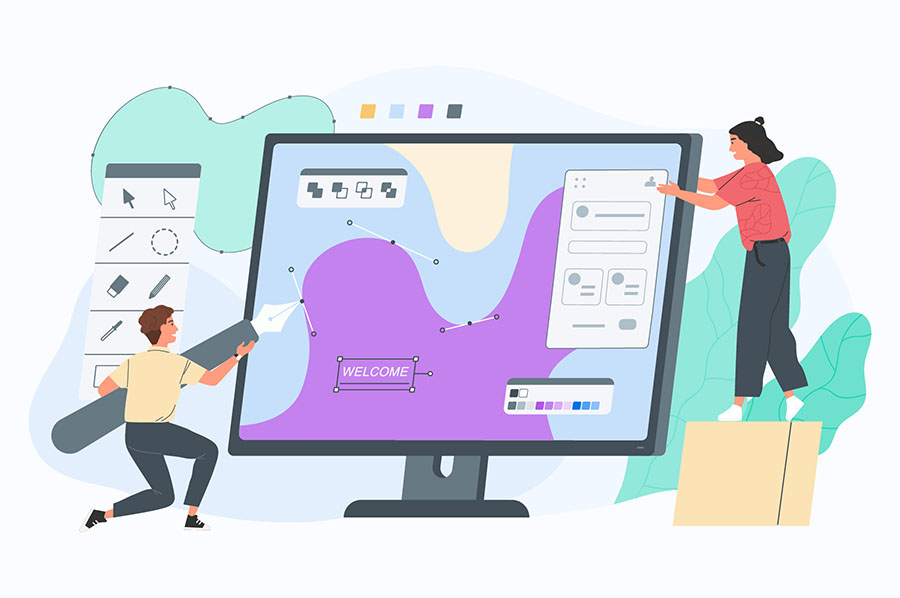
Have you thought about designing a website but weren’t quite sure how to do it? Does your budget prevent you from hiring a professional to create the kind of fabulous website you want for your business? The article below will provide you with the tools and techniques to get started with your own powerful website.
Use fixed-position navigation. This means that when the visitor goes down your page, the navigation panel will be locked. This is easy for the visitor and good for marketers.
Make sure to view your website in a variety of browsers. You have to make sure that you’re seeing your site through the eyes of all customers. Always go out of your way to discover what browsers are the most popular and design your site to work efficiently in all of them. Checking your website with different operating systems and browsers will help ensure that it works for everyone.
You should be aware of any clashing colors when building your website. The text on your web pages, in particular, needs to be clear and easy to read on the colors you choose for your backgrounds. In general, a light background with darker text is much clearer than the reverse situation. Don’t be afraid to ask a friend or colleague for their opinion of the color scheme.
Be aware of the background on your website. Backgrounds that include animations or intricate patterns often make it very difficult to read important text content. Select backgrounds that work in harmony with the site, not in competition with it, and visitors will find your material much more accessible and useful.
You want to ensure that your site is easily able to be scanned. Usability tests have determined that the majority of online visitors aren’t going to read all content but instead scan for something interesting. That’s why it is smart to break your information into smaller, more easily comprehended chunks. Also, make sure to keep the most important information at the top. In this way, your visitors will have a good experience and get the information they need.
Make sure to preserve personal information that may need to be entered again by the same user of your website. For example, if someone registers for your site, and some of the same information is needed to fill out another form, make sure data that they have already entered is preserved, so users do not need to re-enter this information. You streamline the process when you create “sticky” information, and your visitors will appreciate you not wasting their time.
To make a more attractive website, try using your own pictures. Pictures help make your website more user-friendly. People will take more time browsing your site and looking at pictures.
Prioritize your user’s needs. A good web designer will always remained focused on the needs of the end user. This is going to have everything to do with accessibility and usability, as well as different types of social interaction. It is important to keep your focus attentive to all those different aspects. Therefore, it is important to look at the site from their angle.
In the “About Us” area of your site, write some good content about who you are. Most websites don’t have very interesting copy in this area. Try to give it a bit of personality. Let people know about your background and experience, tell them how you started designing websites and show them examples of your achievements.
Choose fonts that are legible, and look professional. You can tell if a site is professional just by viewing their fonts. Don’t use handwriting or comic fonts as most people won’t have them installed. If your website calls for a font that your visitors do not have, a default font will be substituted. Try to use common browser fonts so your users don’t see unexpected type layouts.
Web design becomes much easier in time. So, start a few pages with C++ and HTML to check whether you understand the basics. It will take many hours of practice, so the sooner you get started, the better off you will be.
It is no longer on trend to use a visitor counter on your website. It may look like you’ve added something neat to your site, but many visitors do not wish to see that. Get rid of it and use other tools to track your visitors.
Proofread all of the content on your site so that you don’t look like you rushed through it. You want your site to flow well, so that visitors can read it quickly without getting caught up in content mistakes. Errors in written content not only cause a site to look unprofessional, but it also slows down readers and causes them to lose interest.
Use a basic layout to get the hang of designing a website. As you continue to learn about web design, you can update and change your site to reflect your new knowledge.
Find your target audience and ask what they think of your site. This will help with designing your site and features too. Getting input about your readers’ interests is essential to a useful site.
Include a search form on your home webpage, as well as on all your other pages. Site searching makes it easier for users to access information, and increases the overall usability of the site. This search option is surprisingly easy to add, and will greatly improve navigation throughout your site.
Using the tips here that you’ve learned about can help you with site design. Whether you want to promote yourself or a product, a website is the best strategy for marketing yourself online. Have fun!